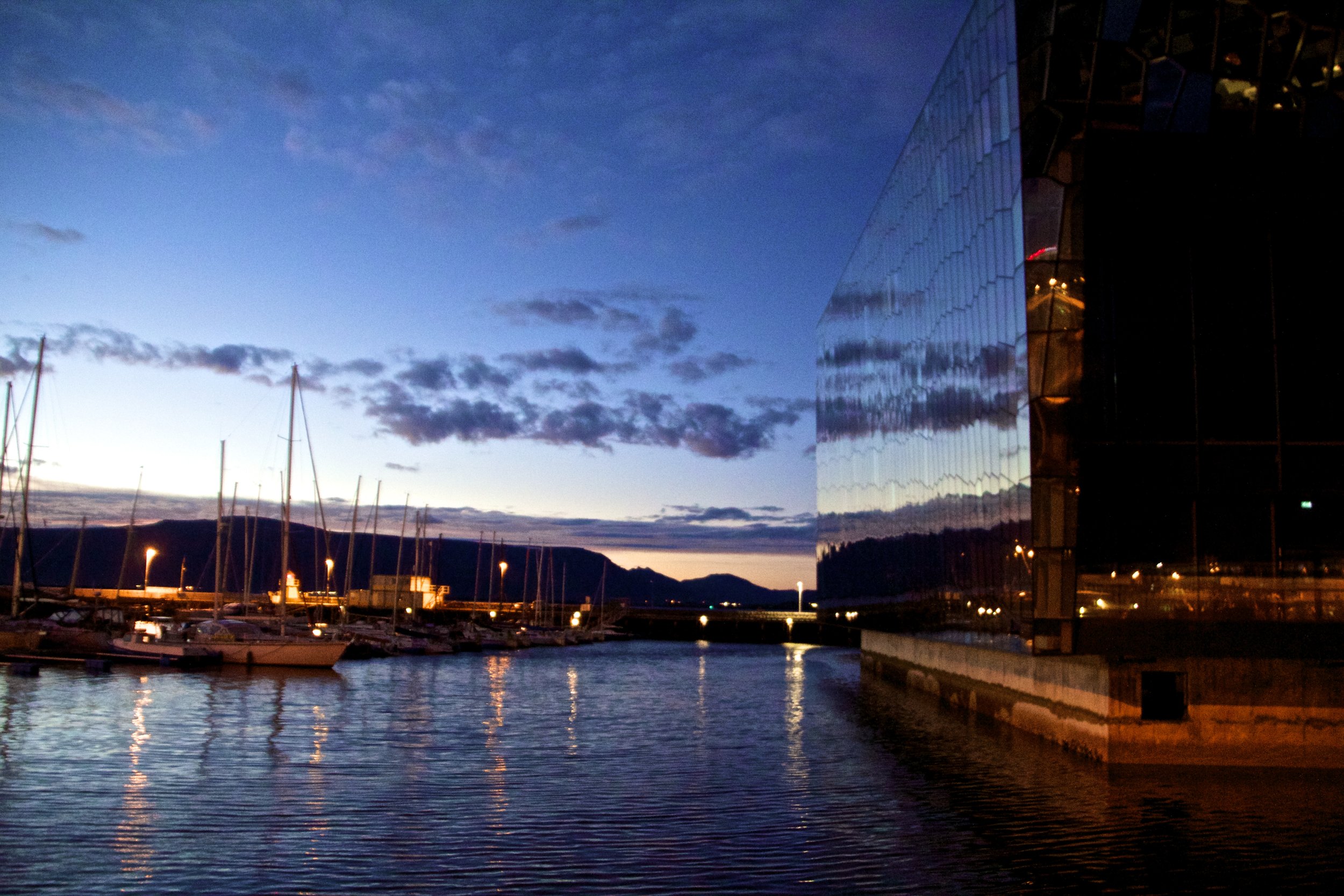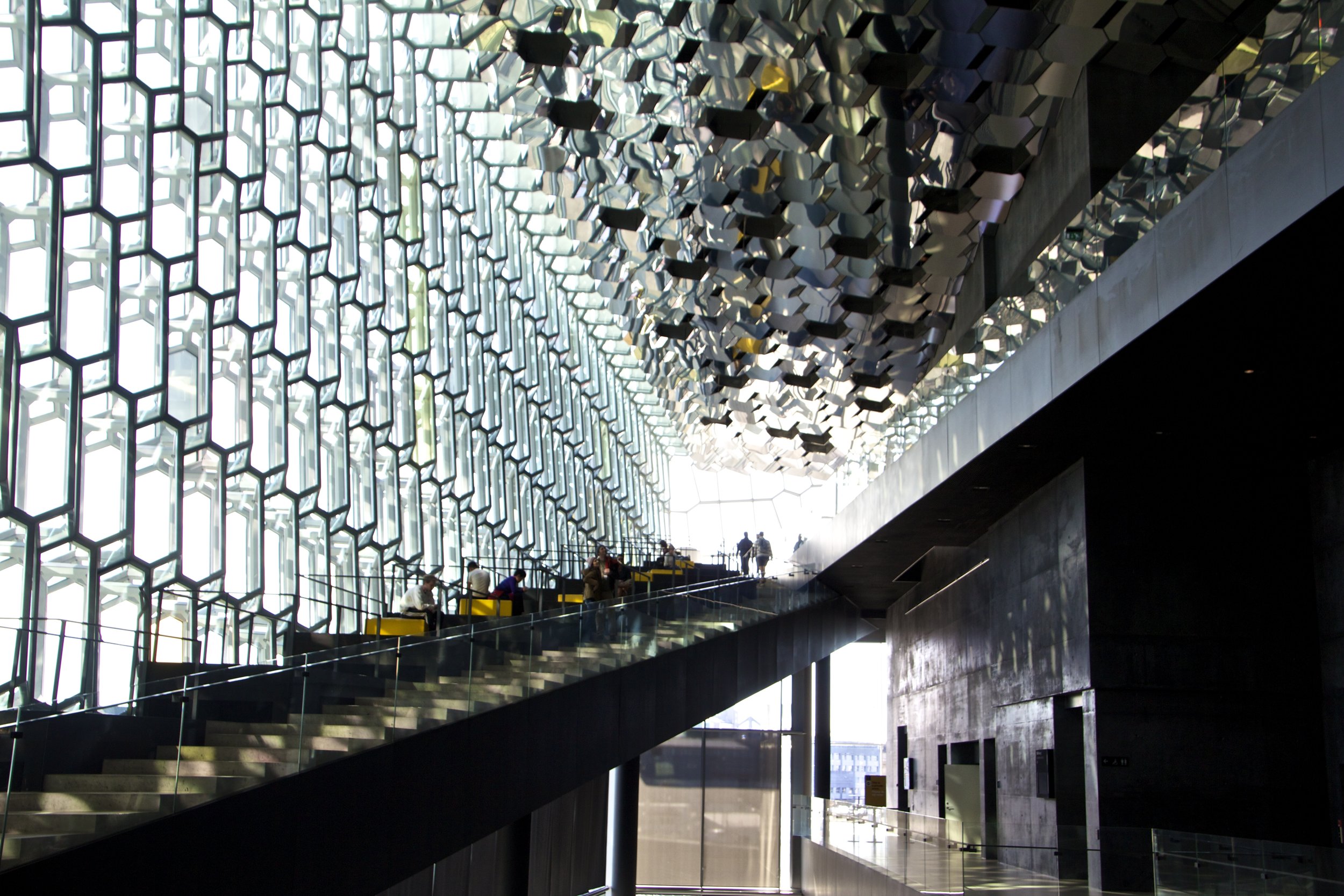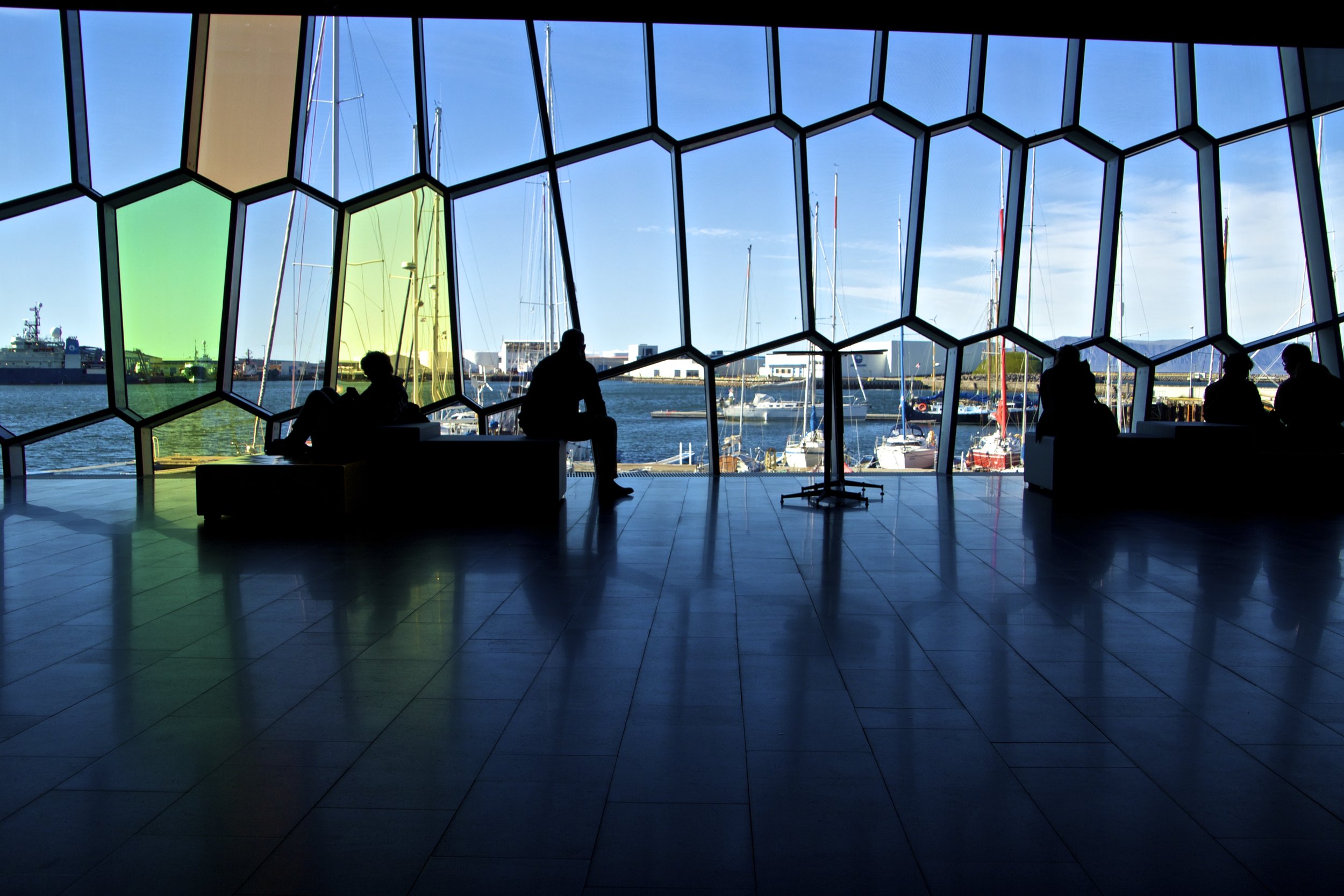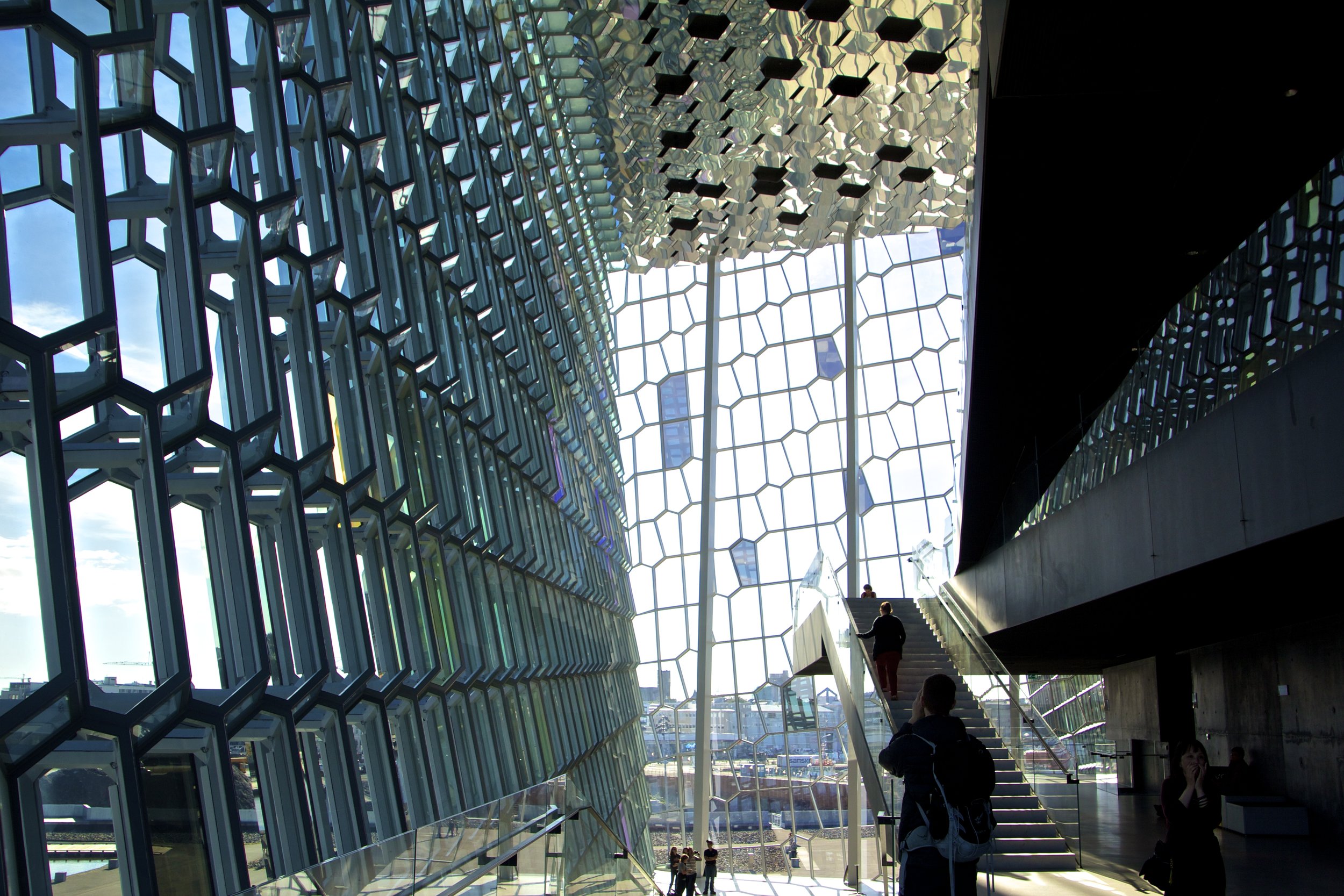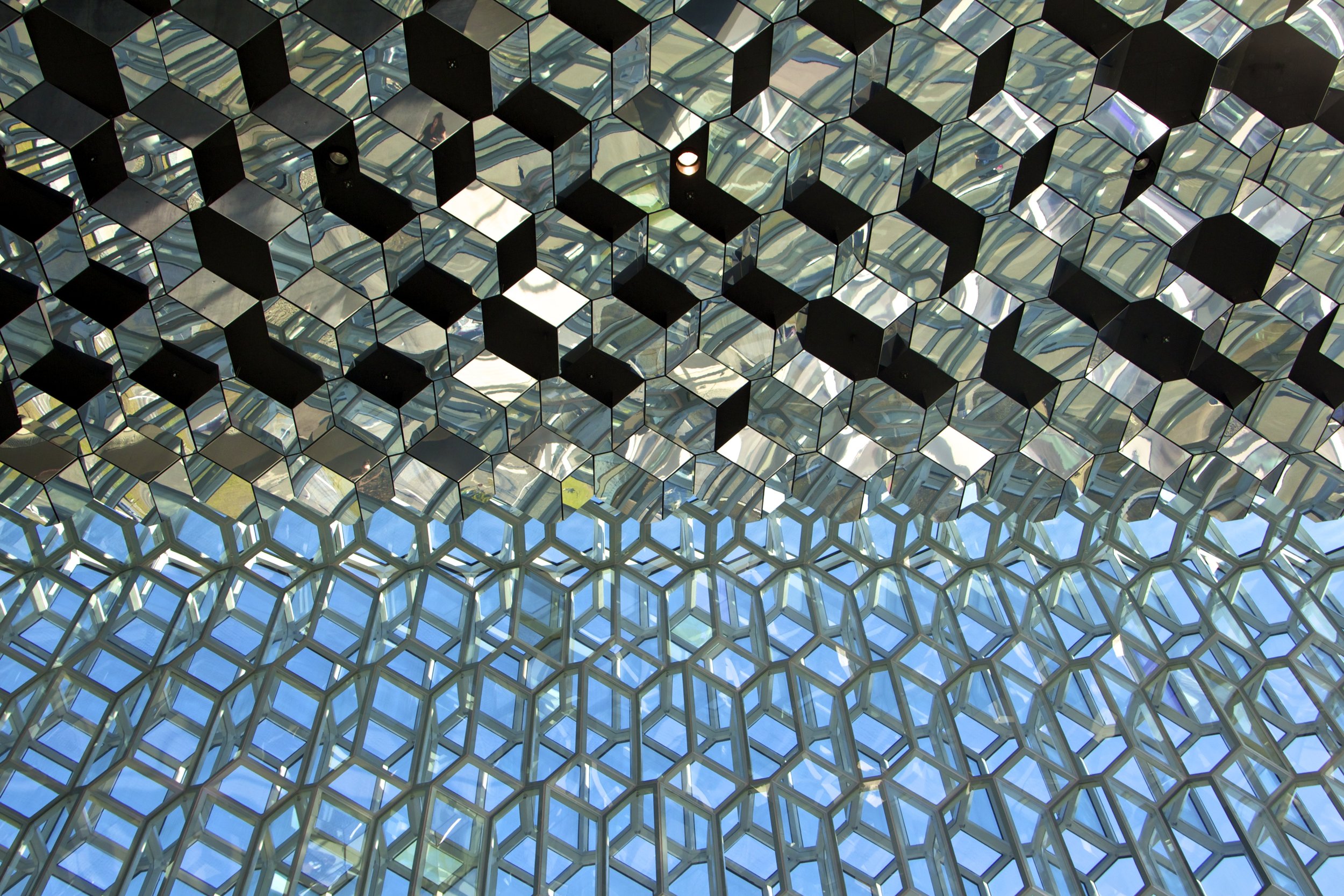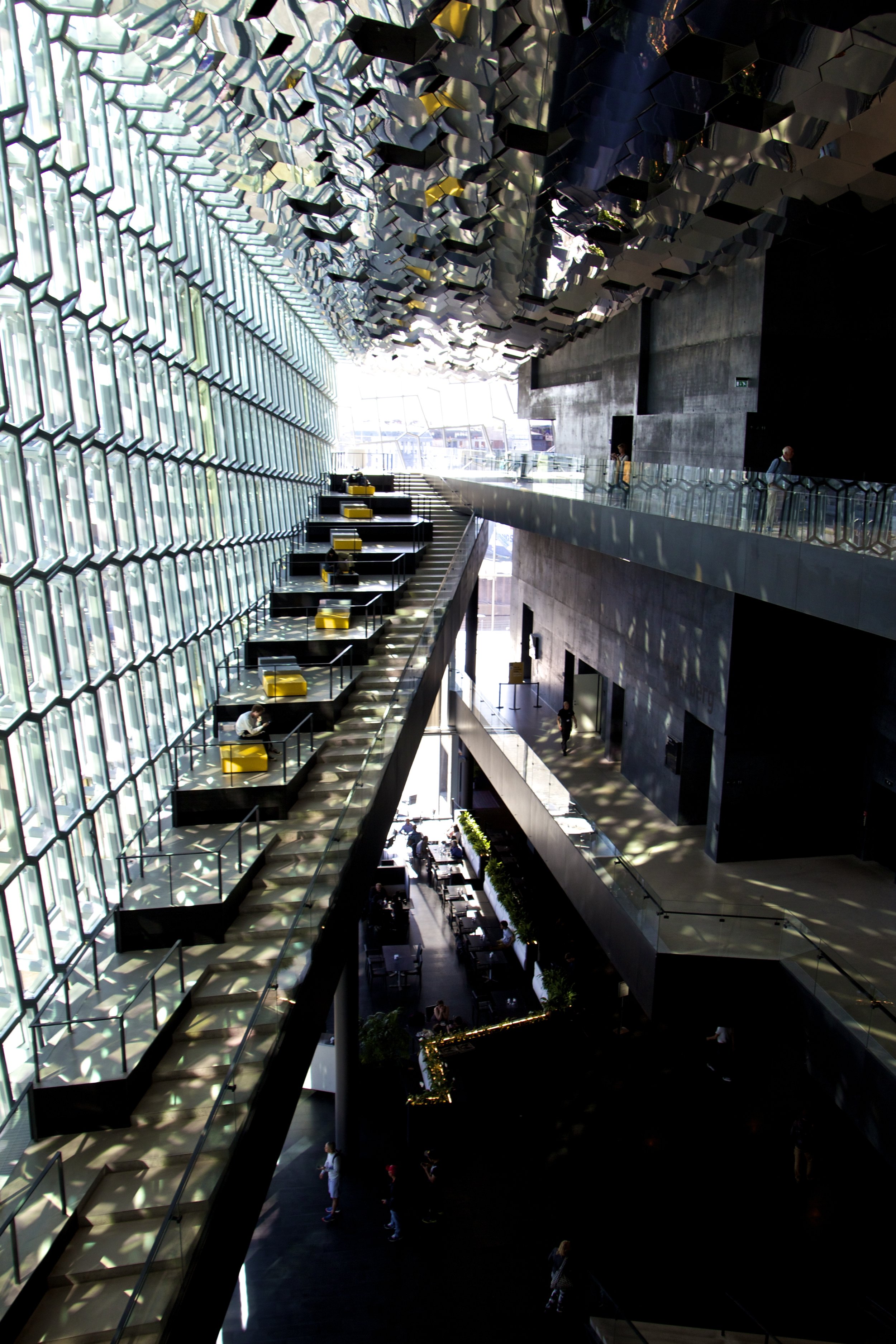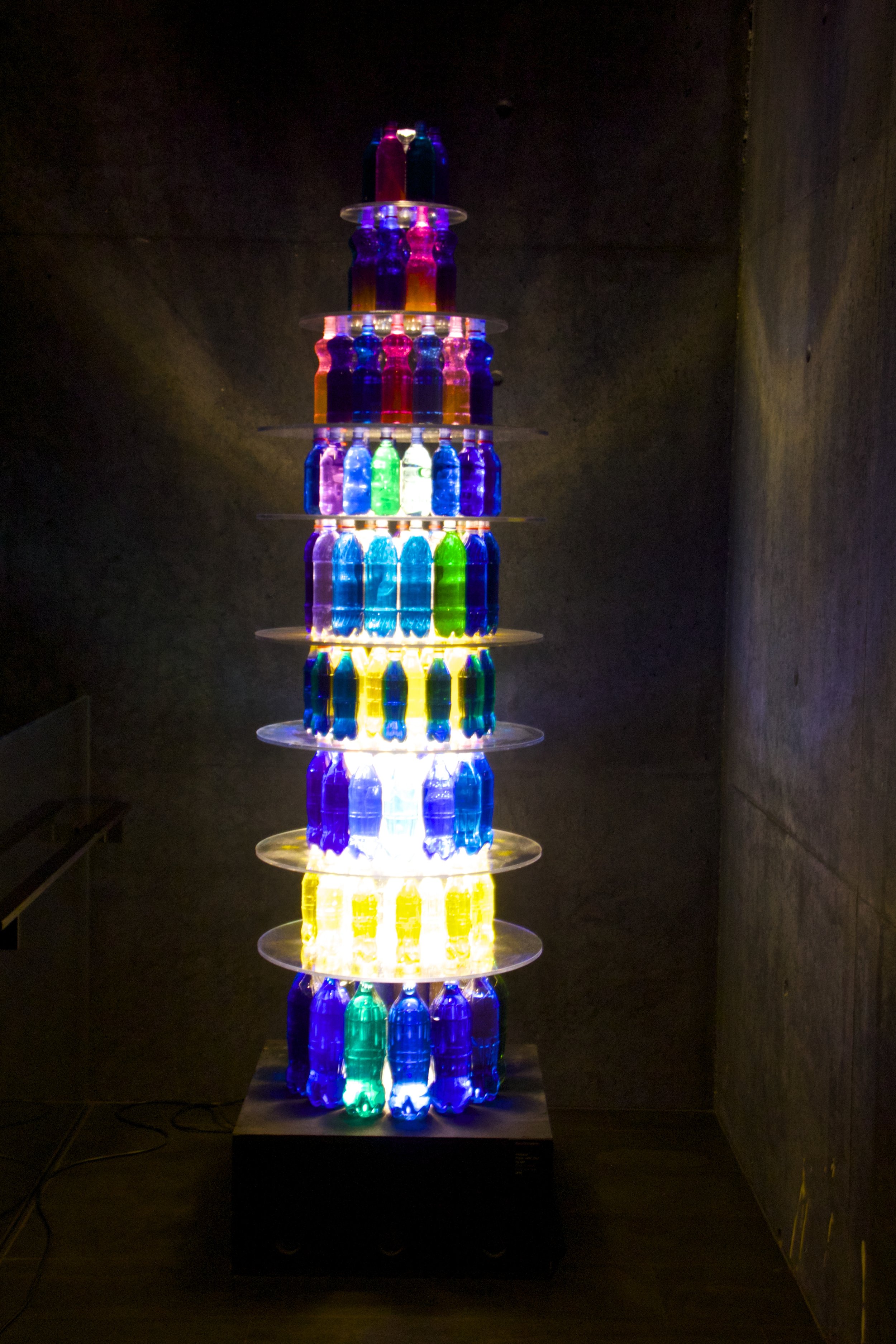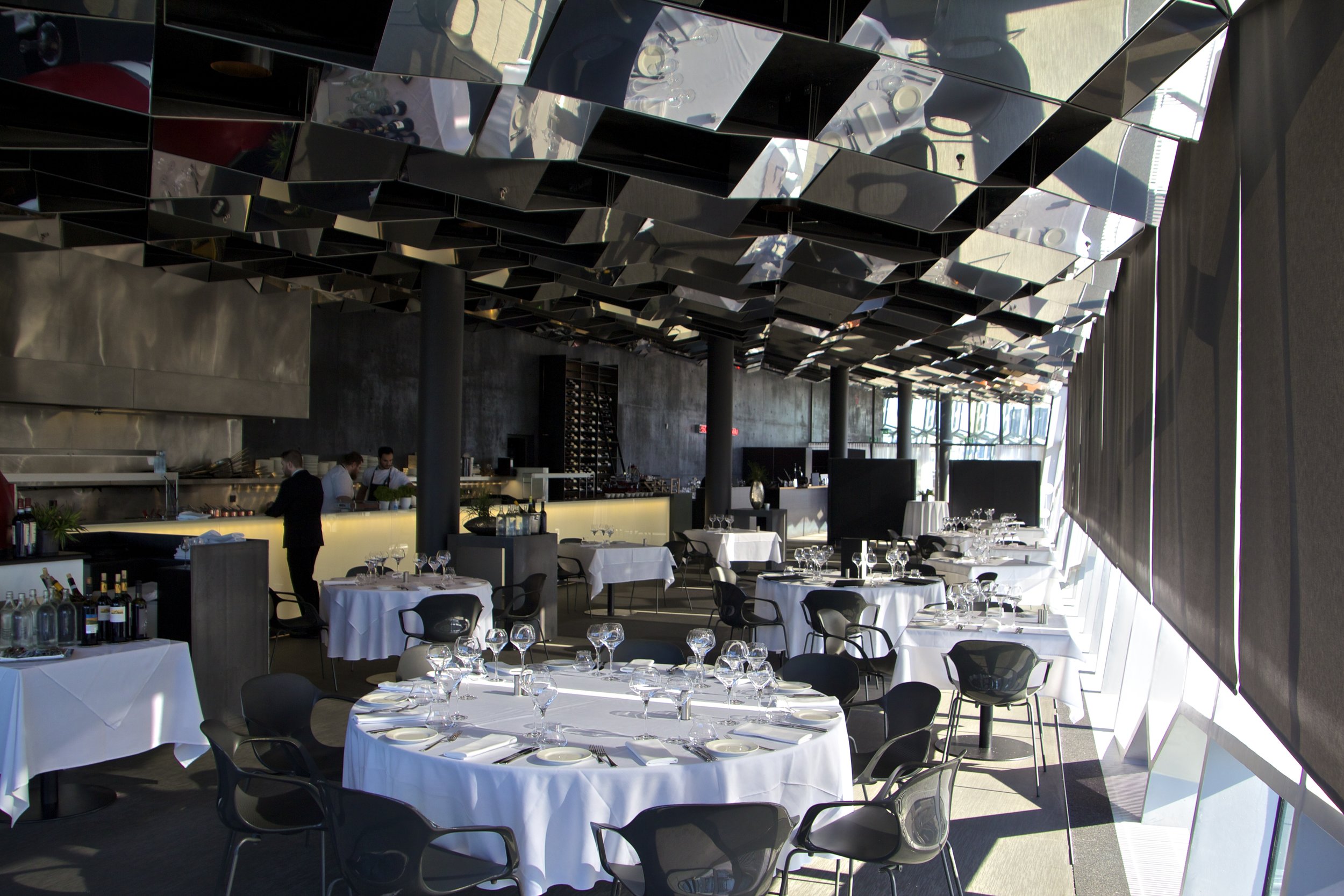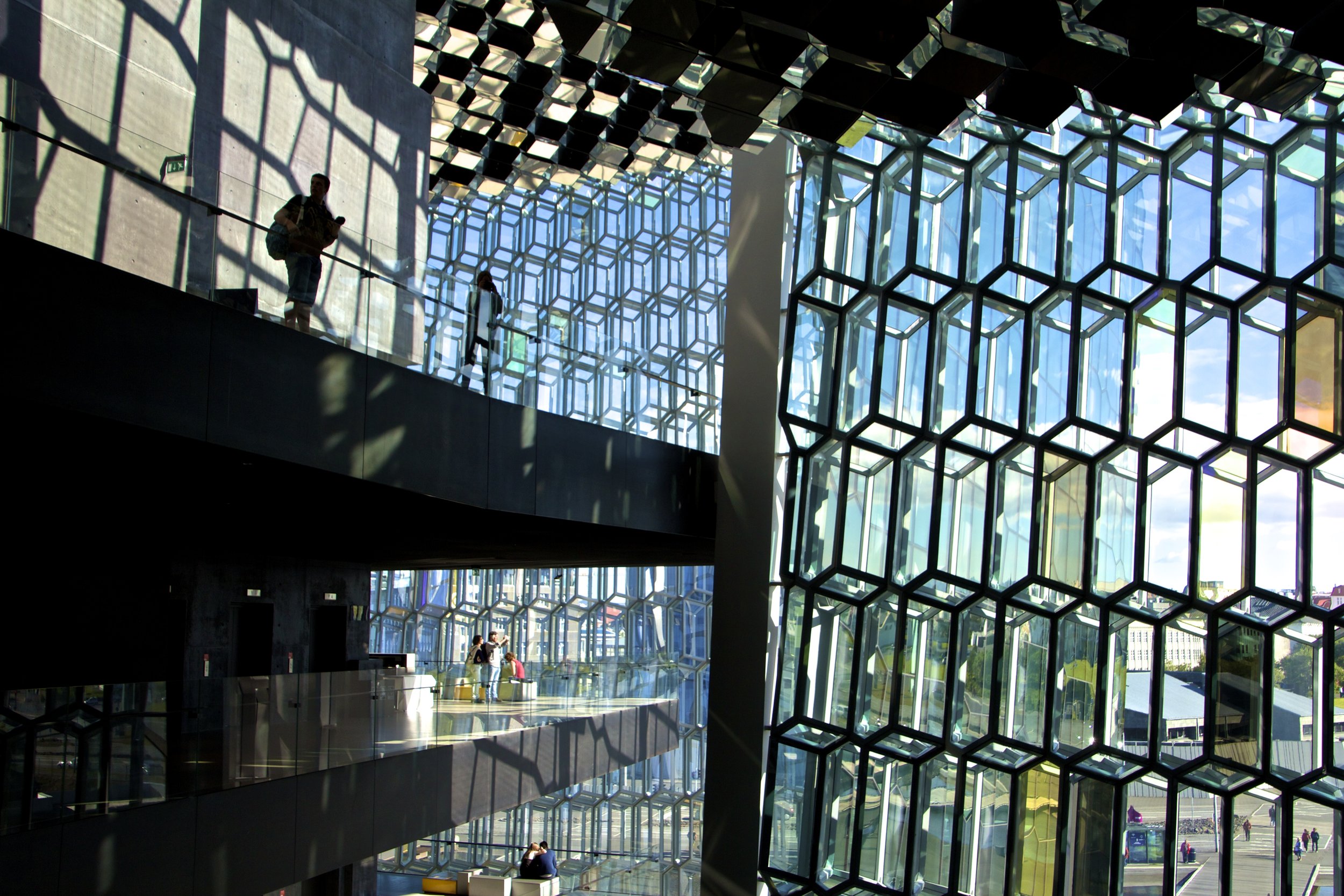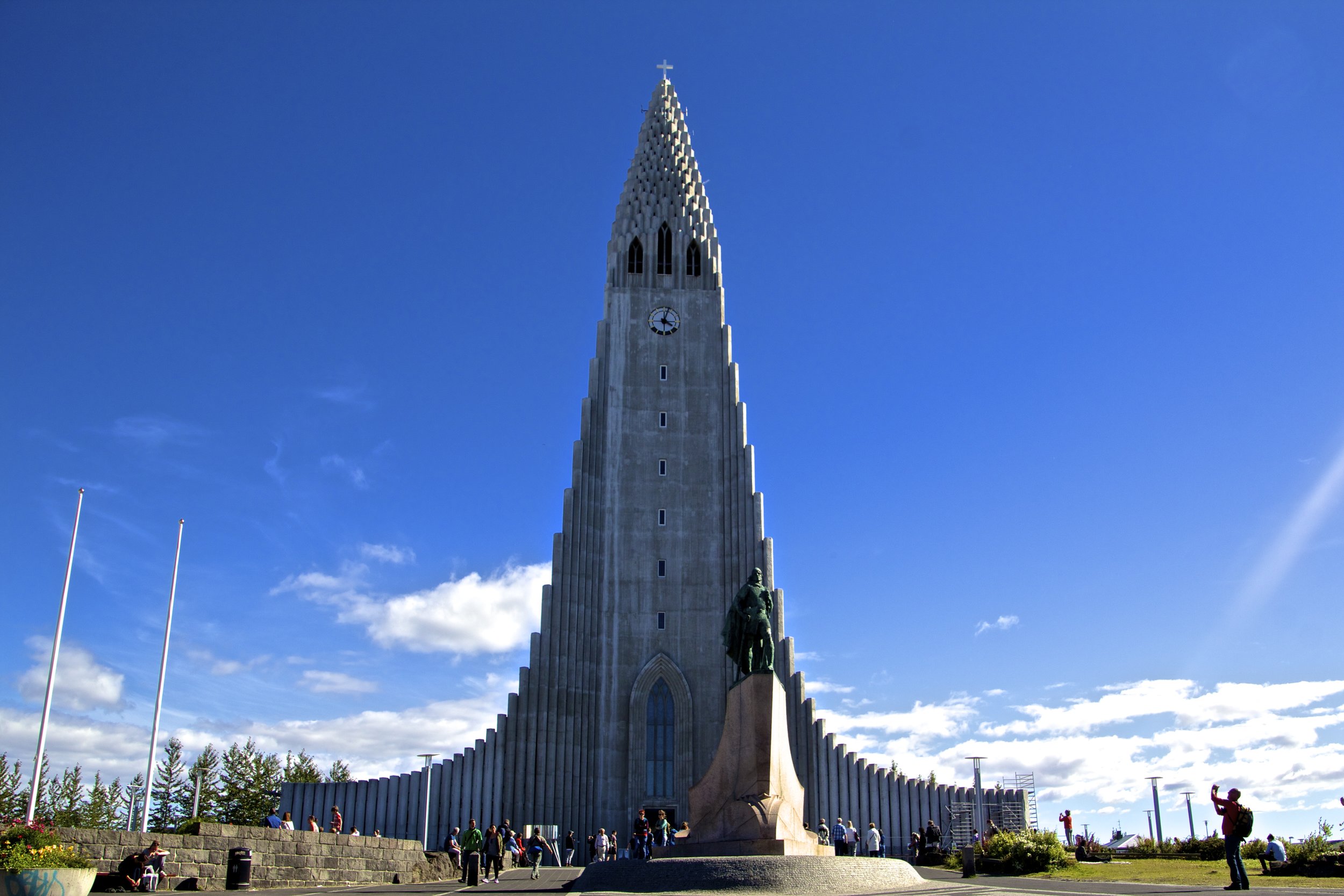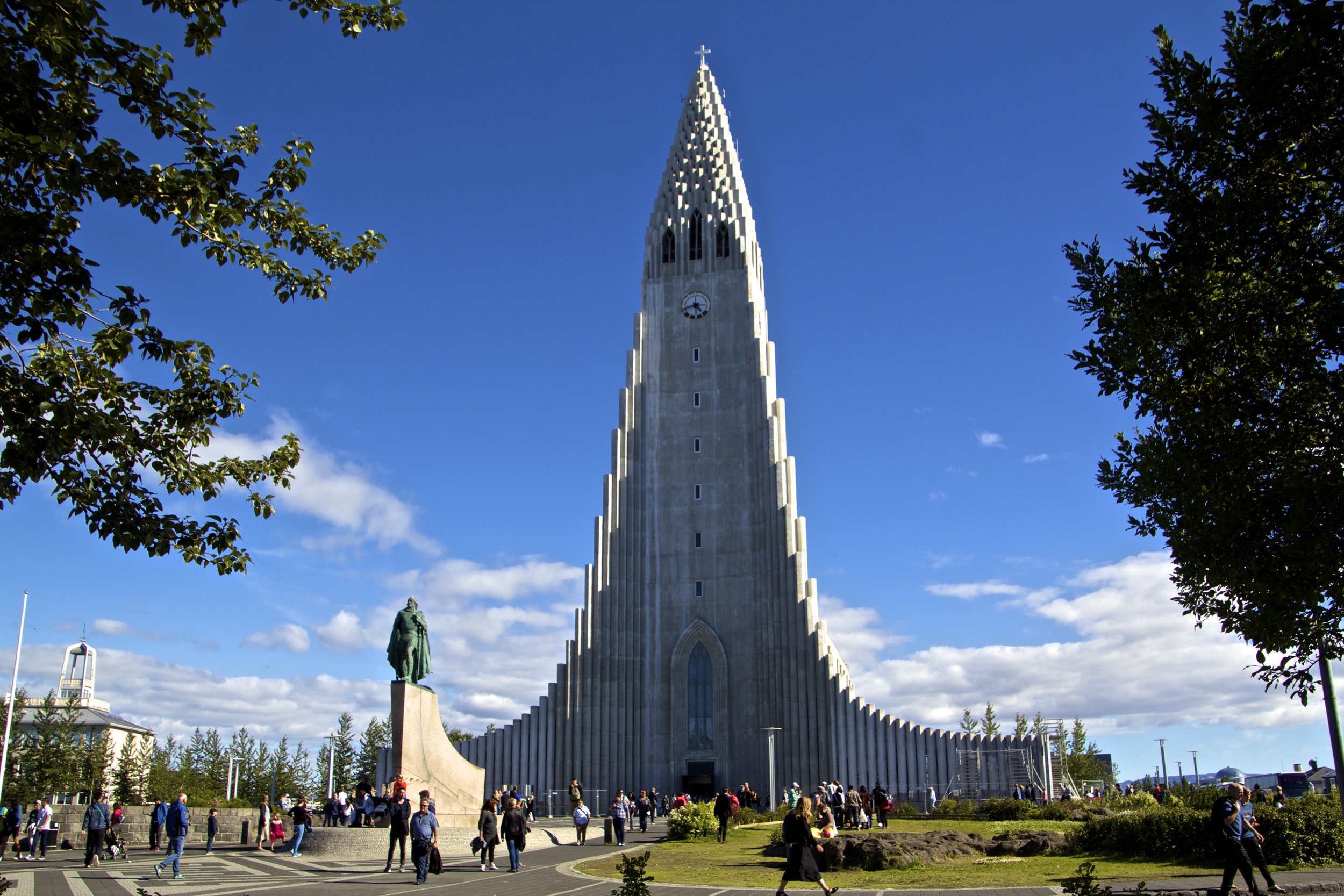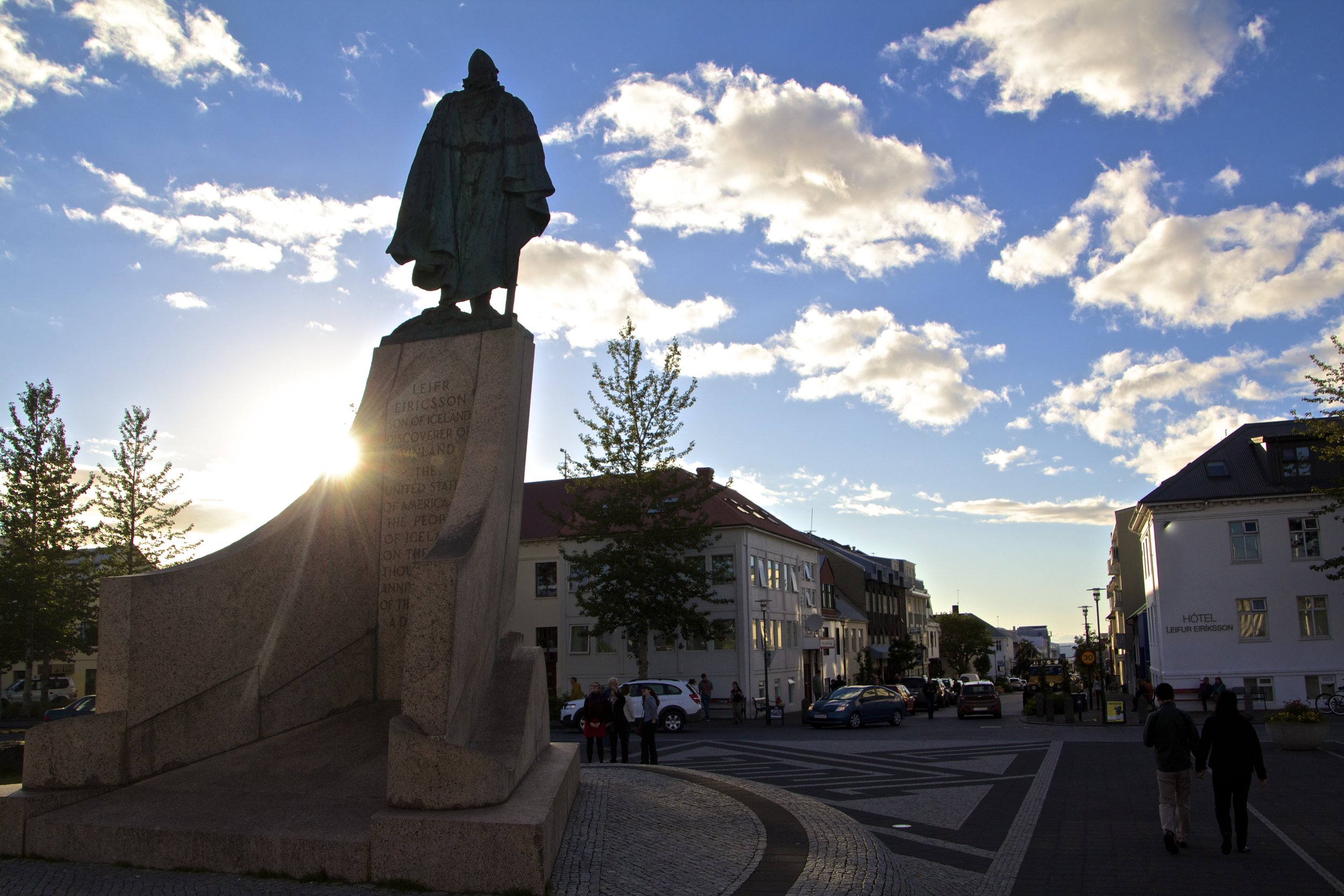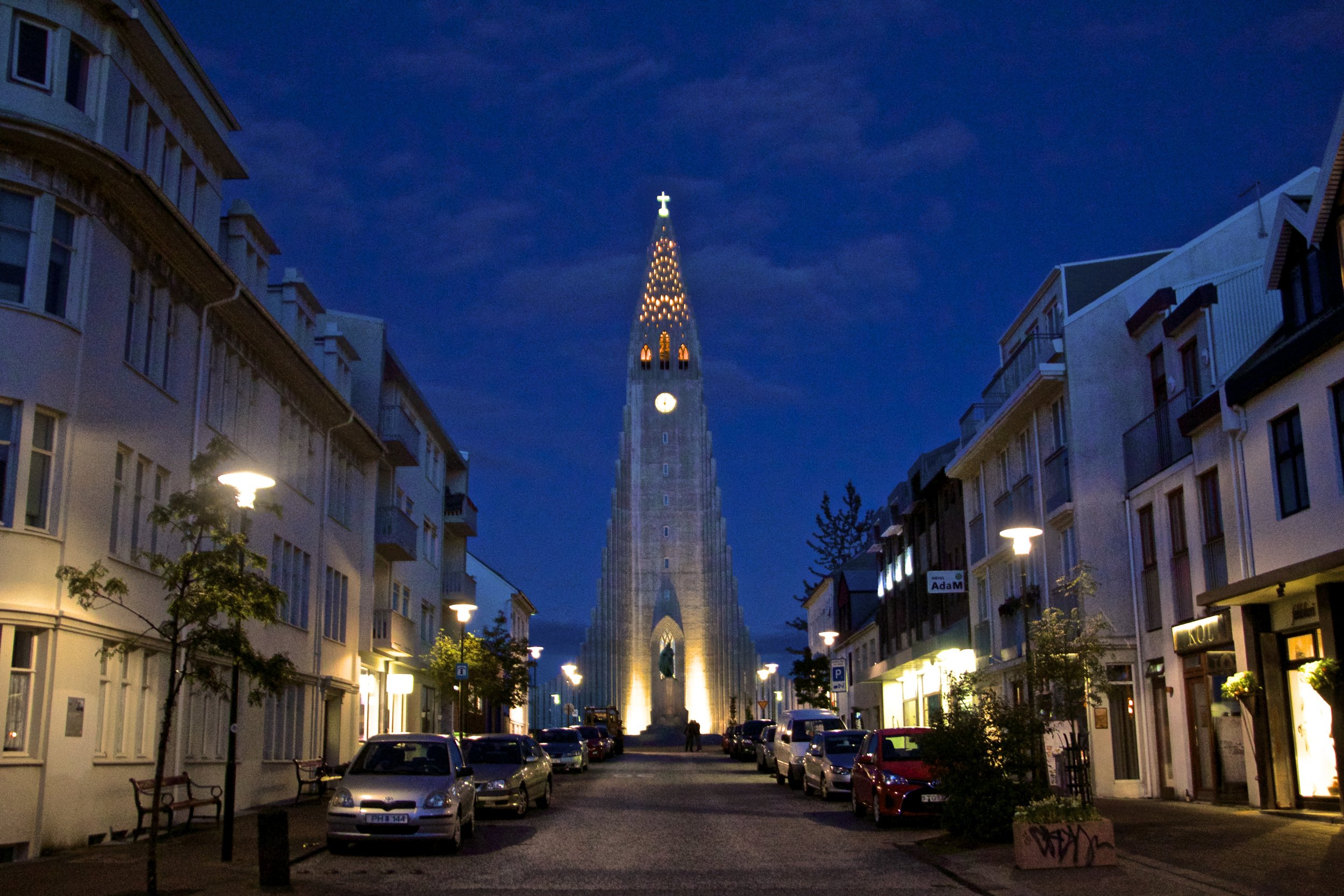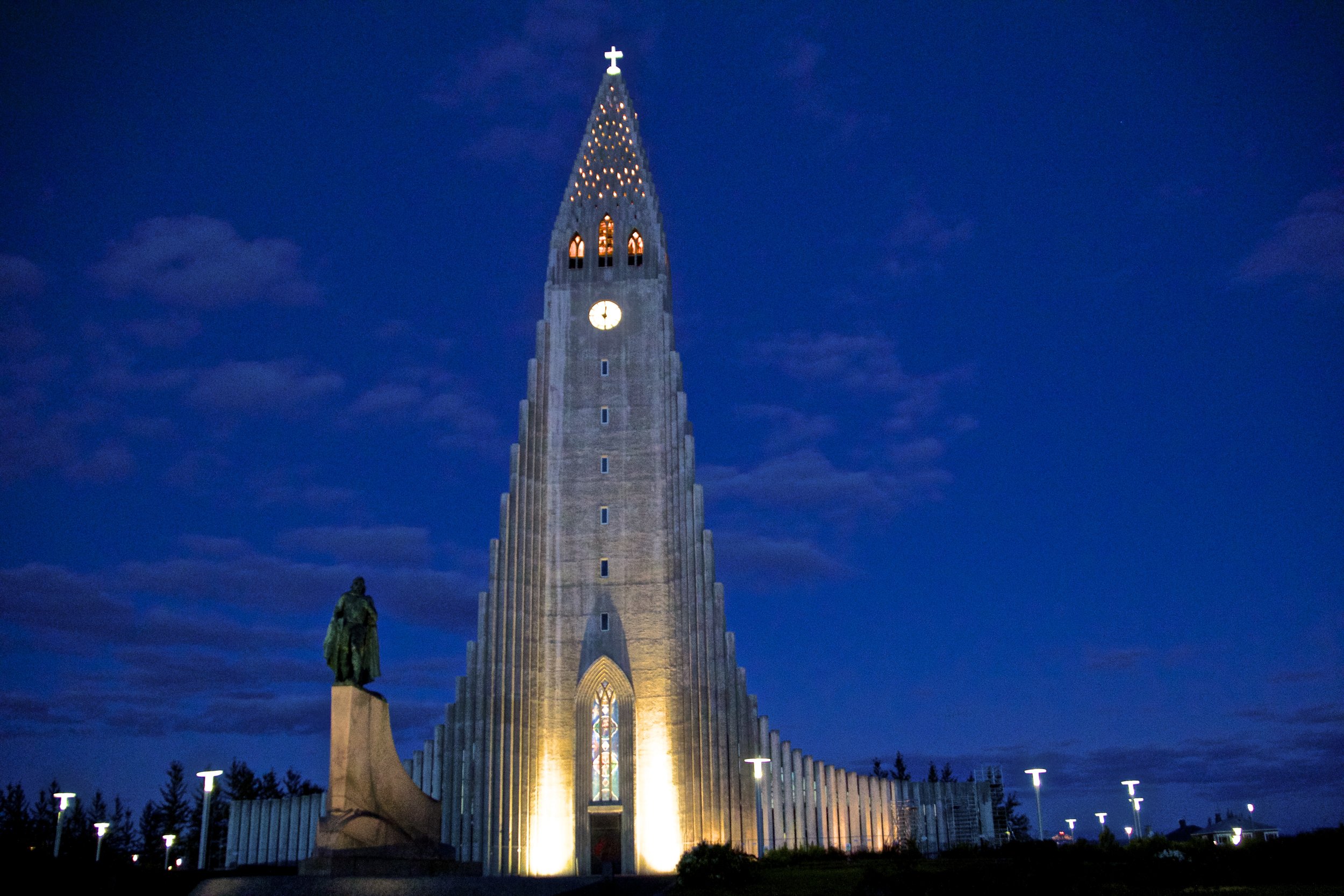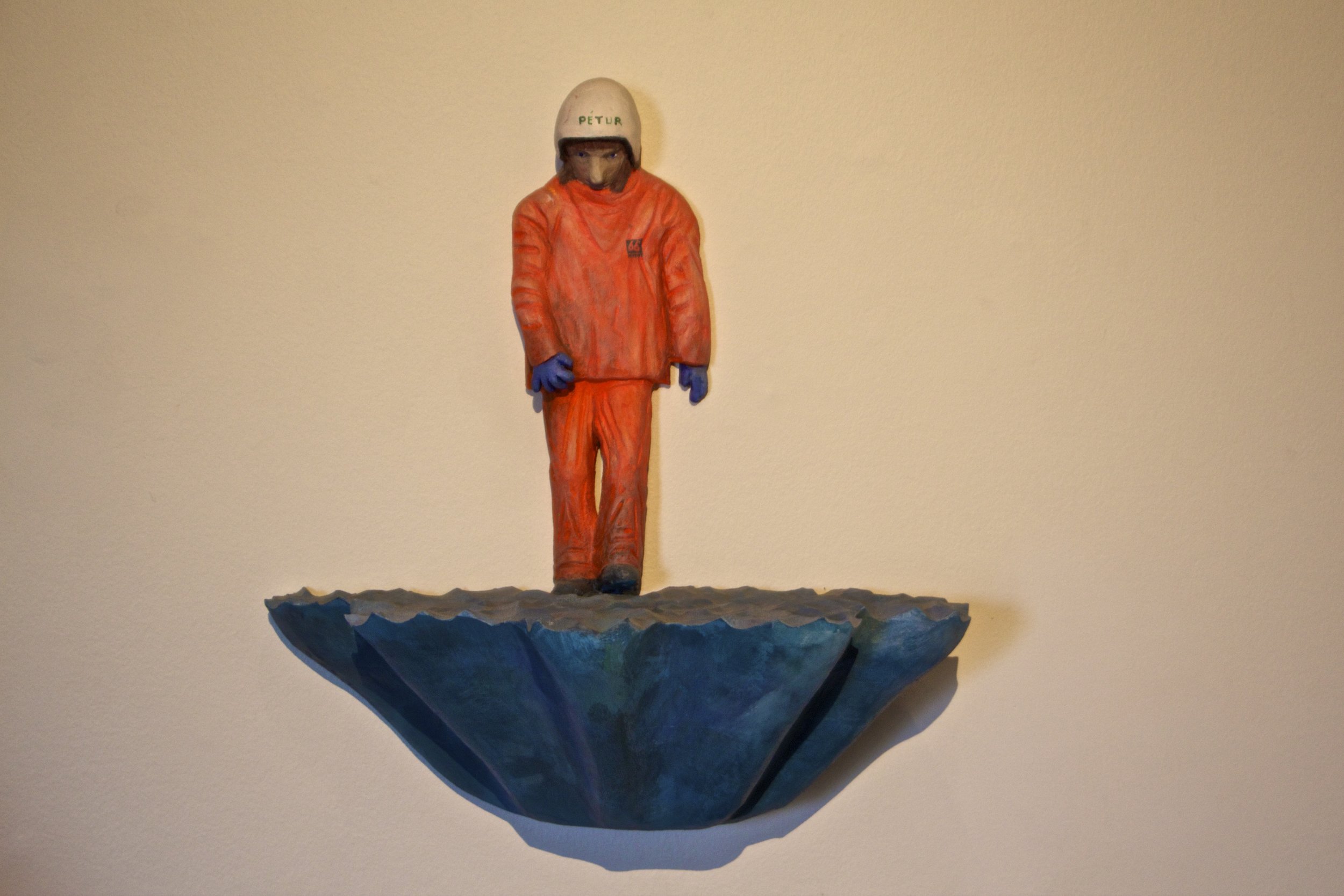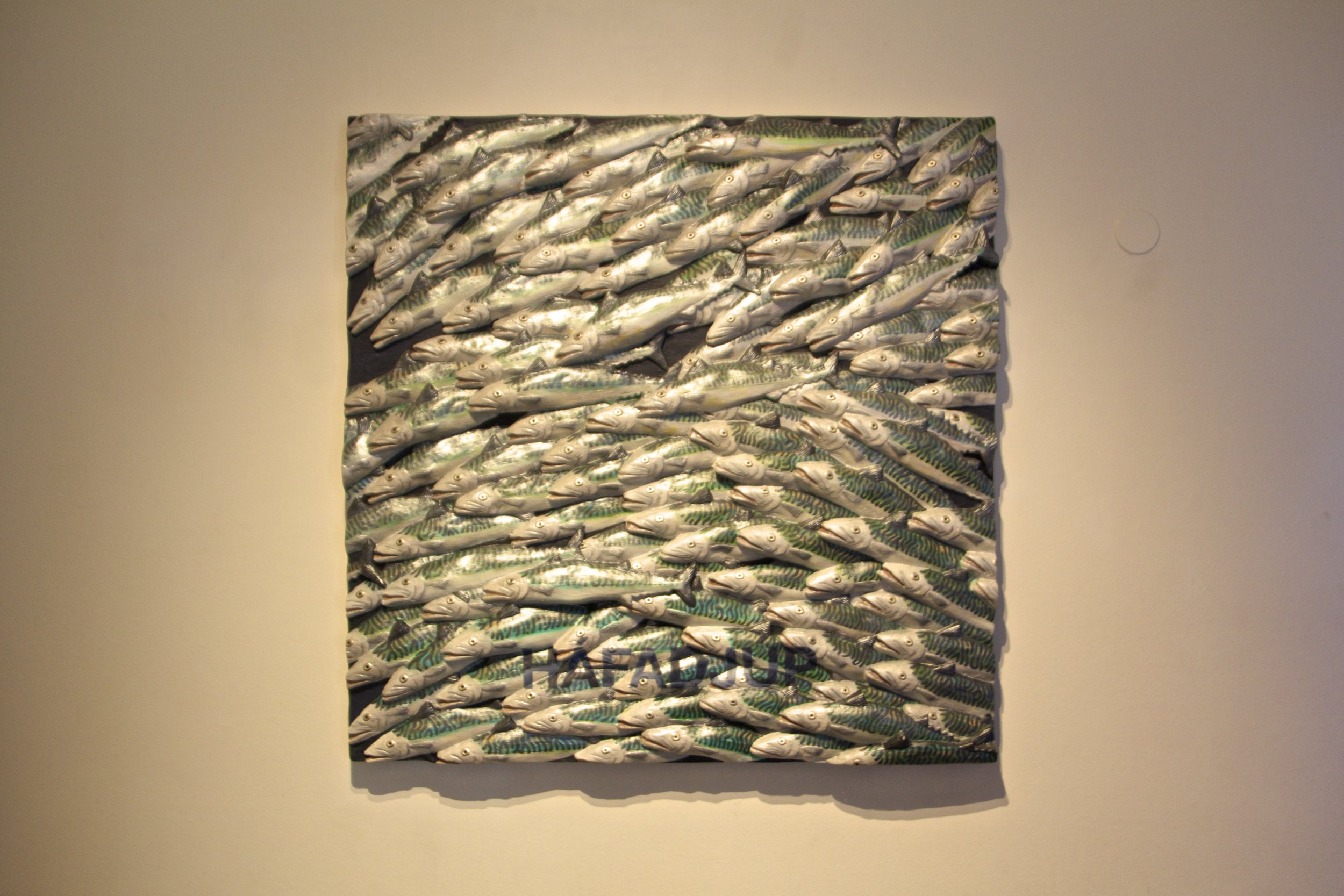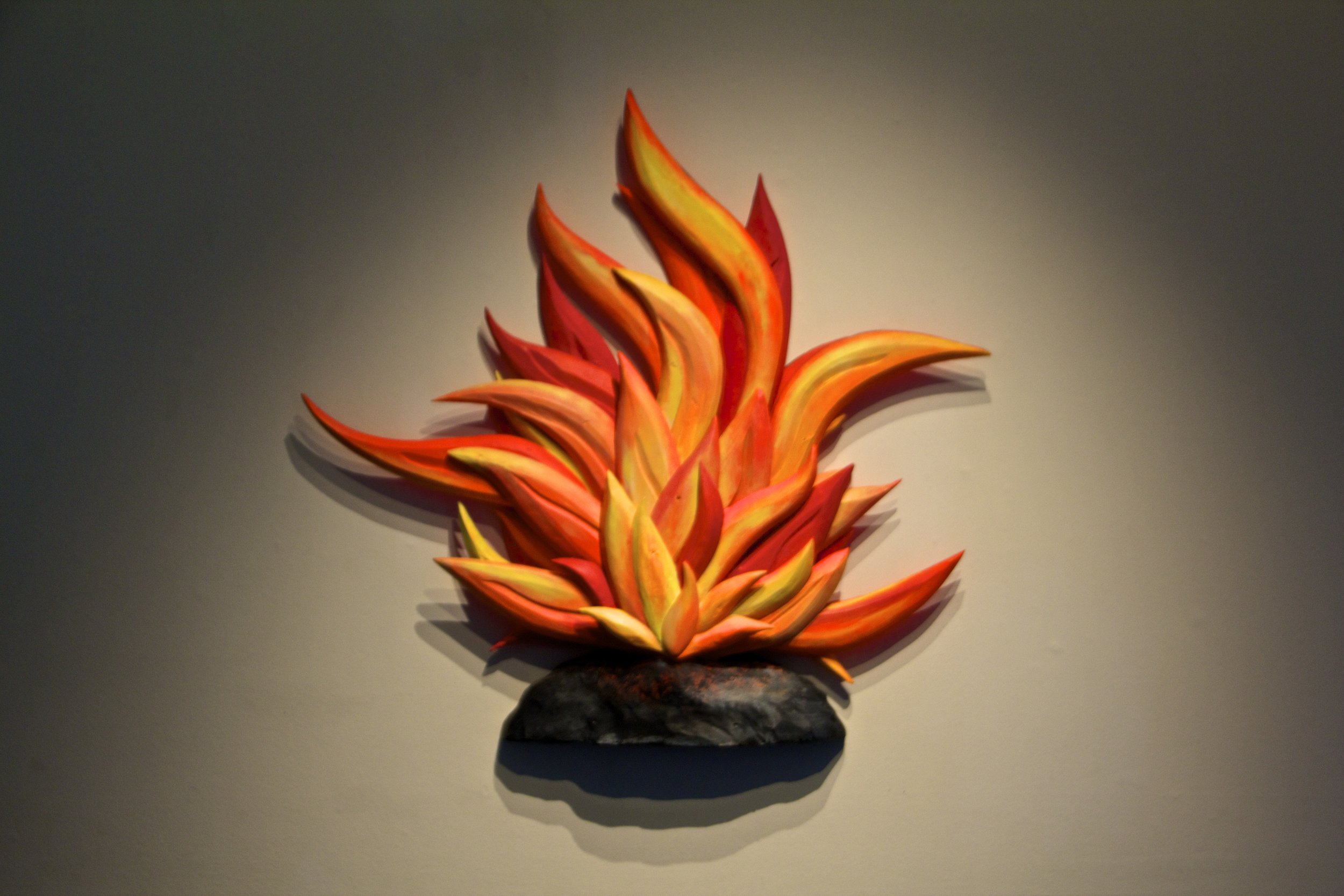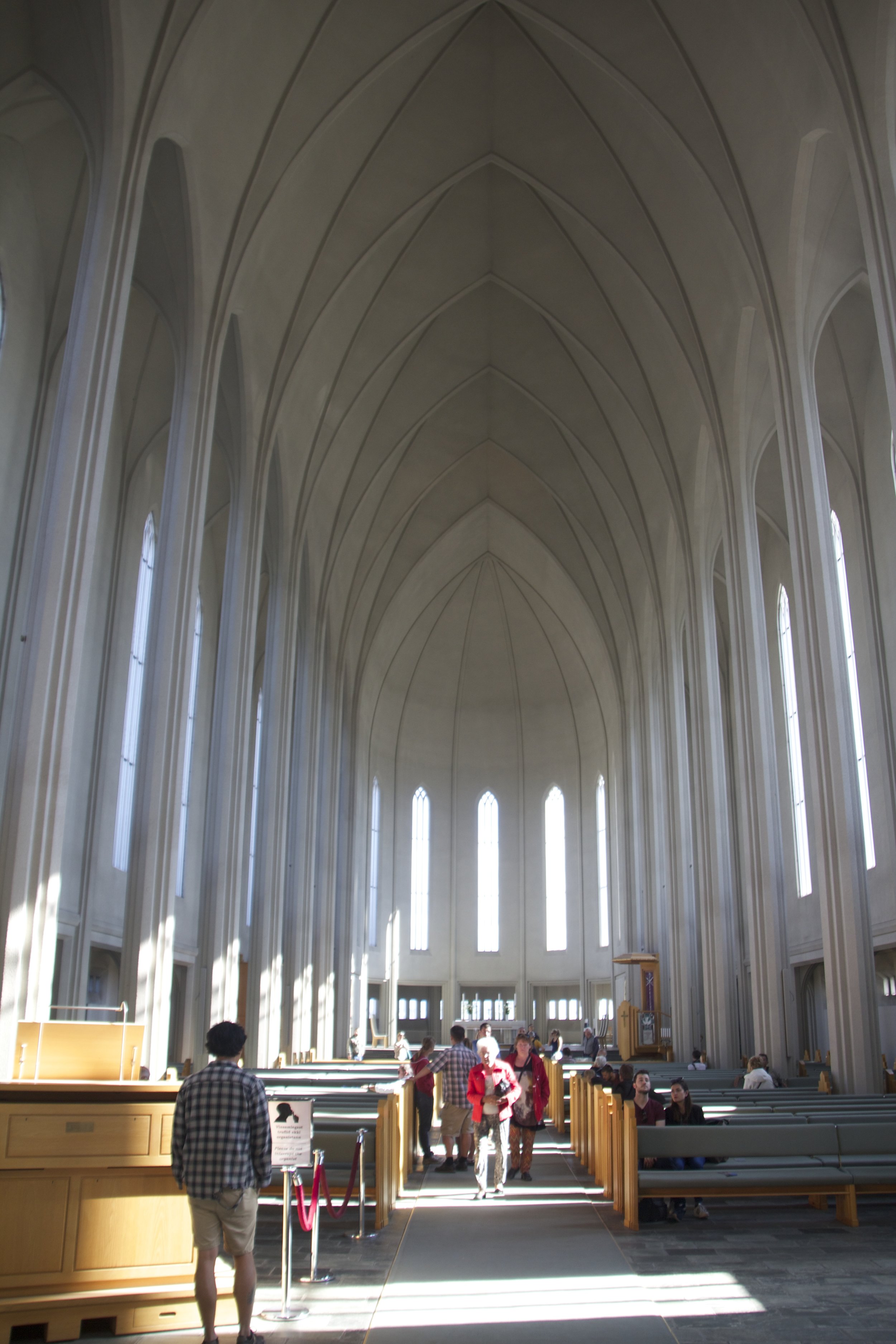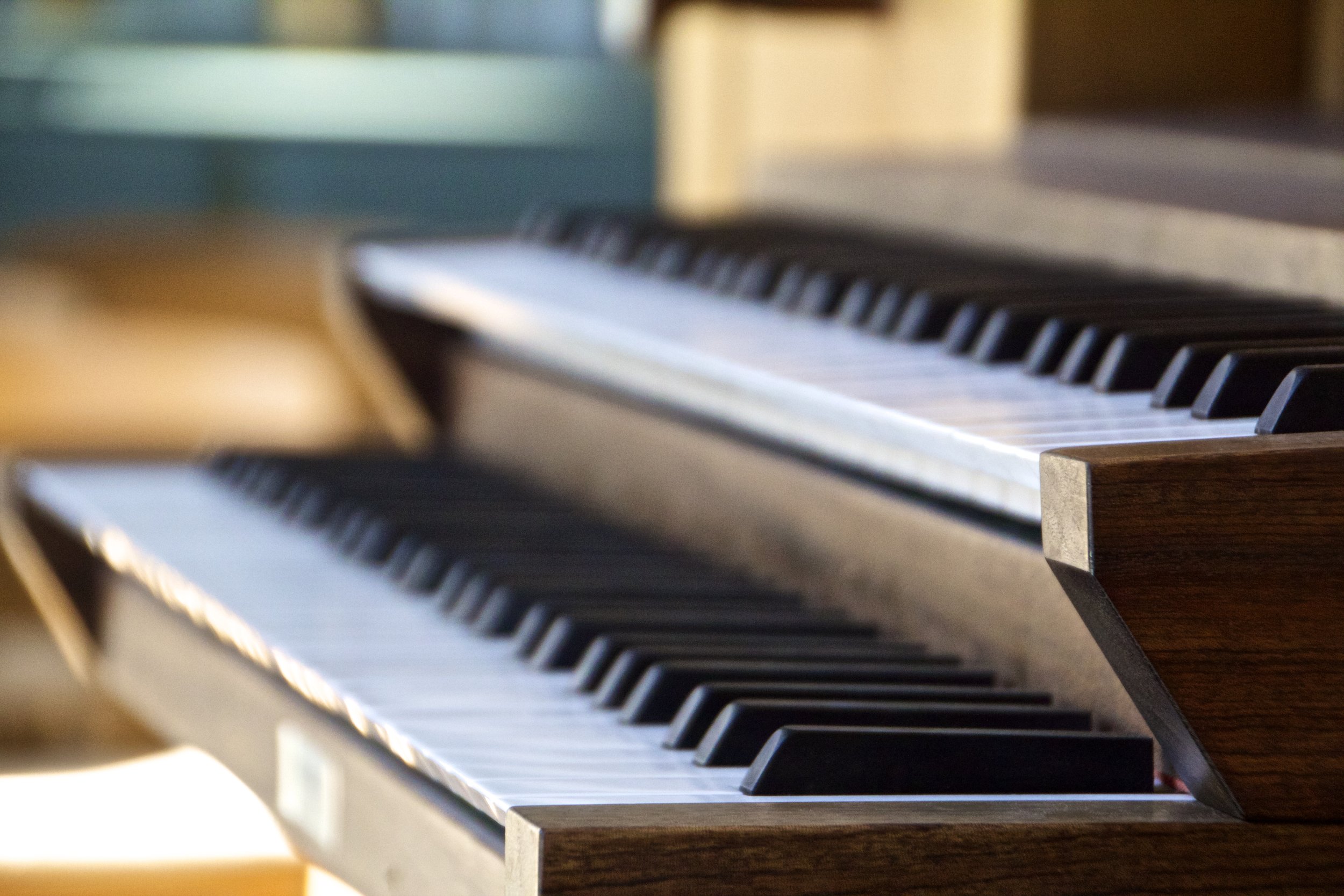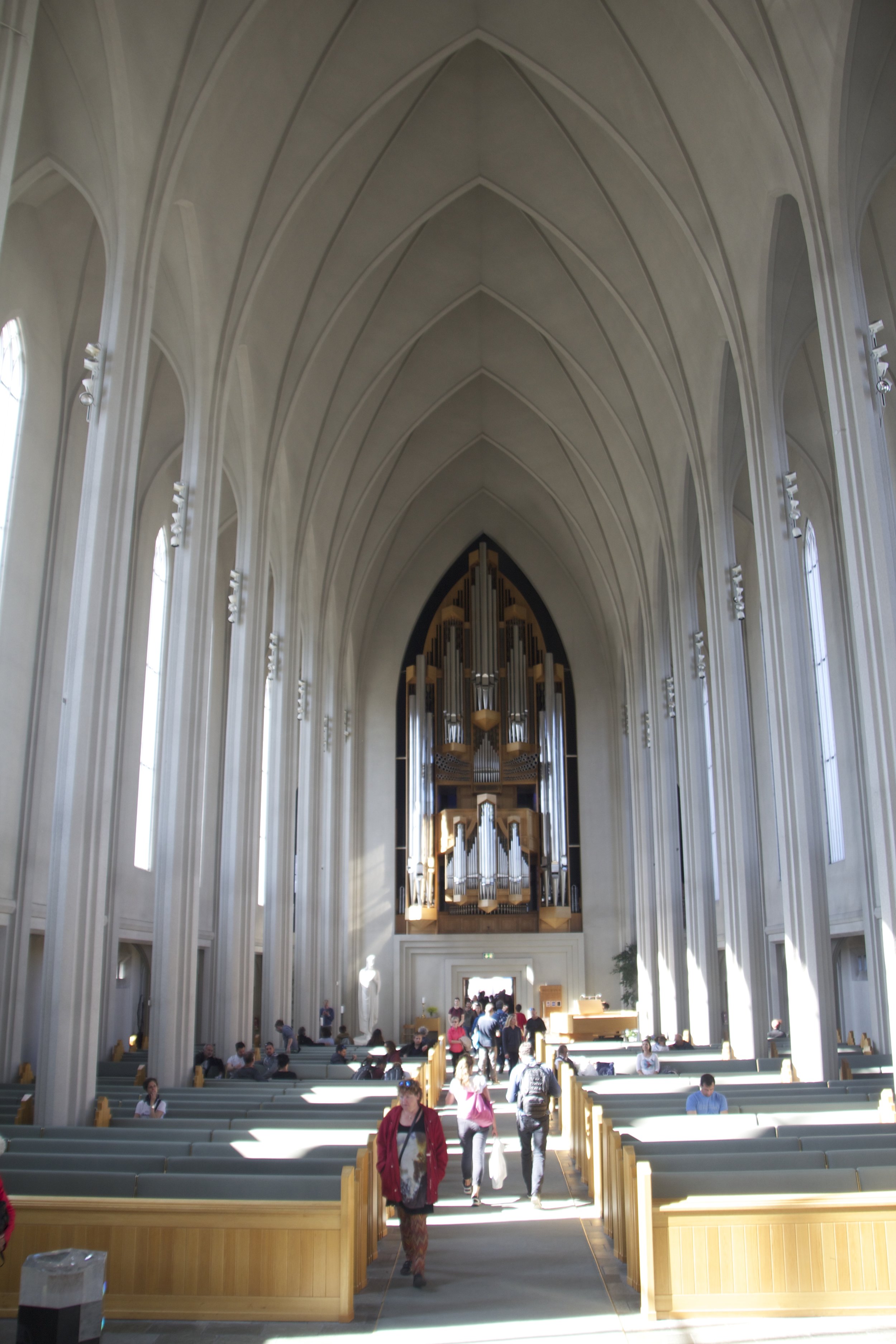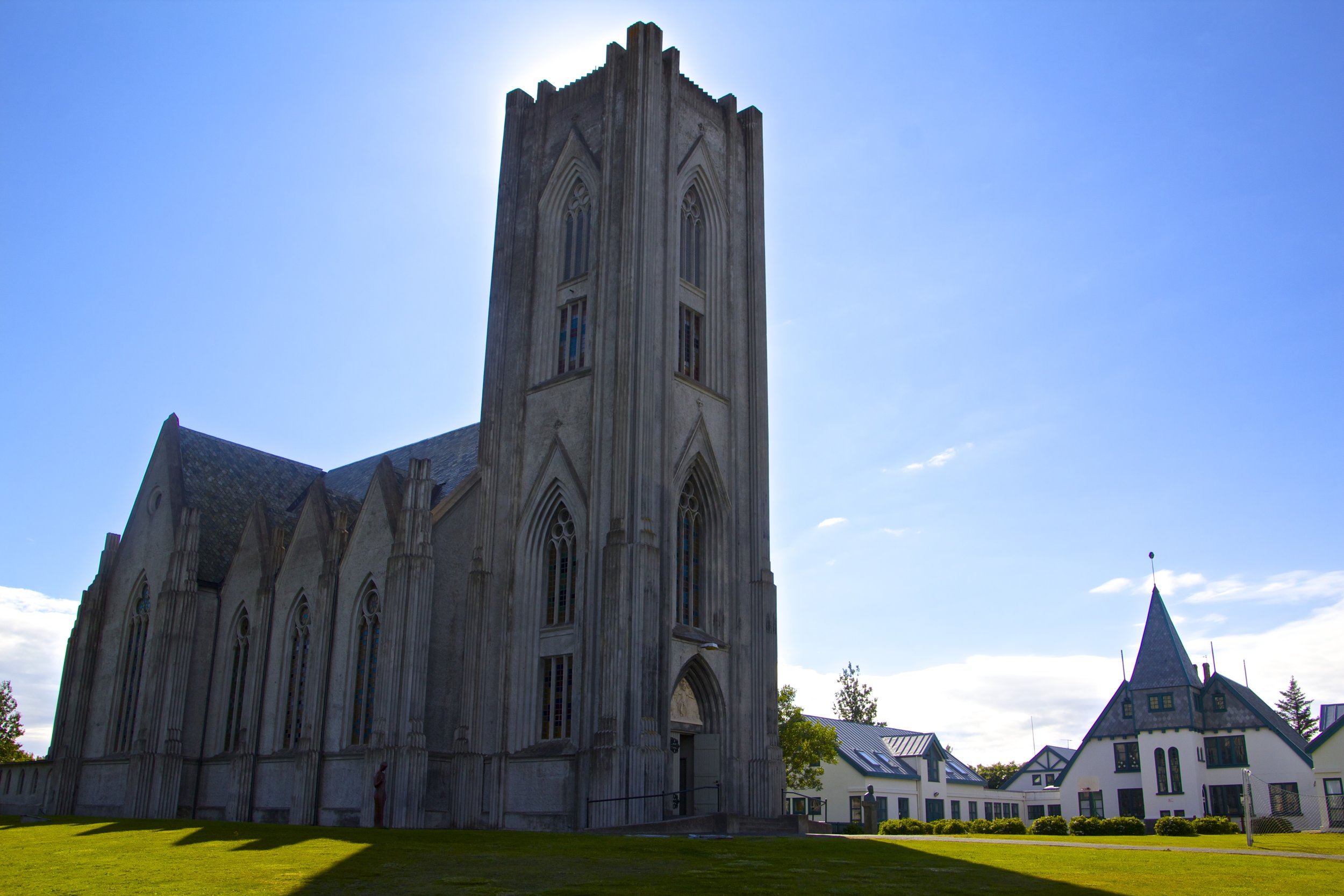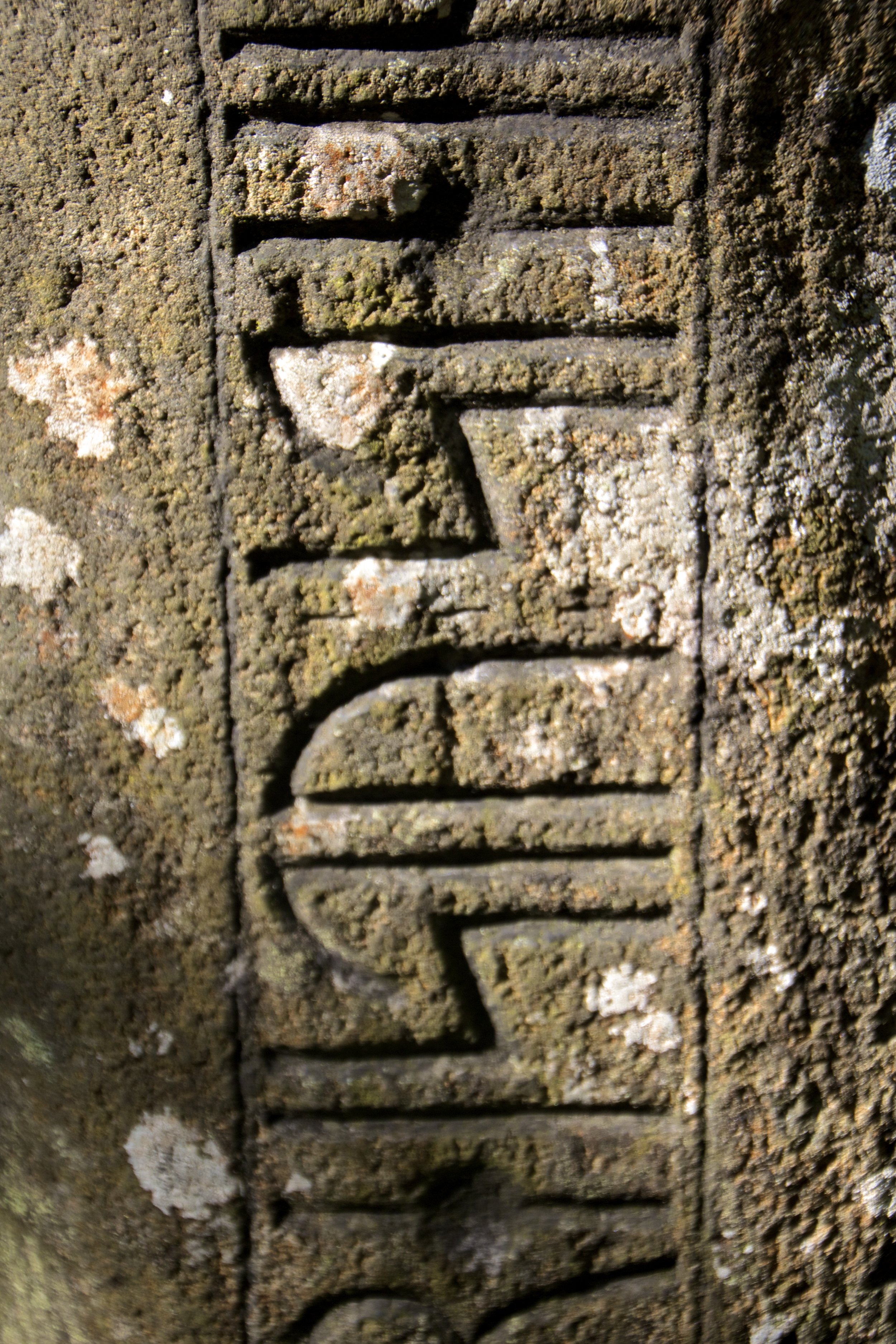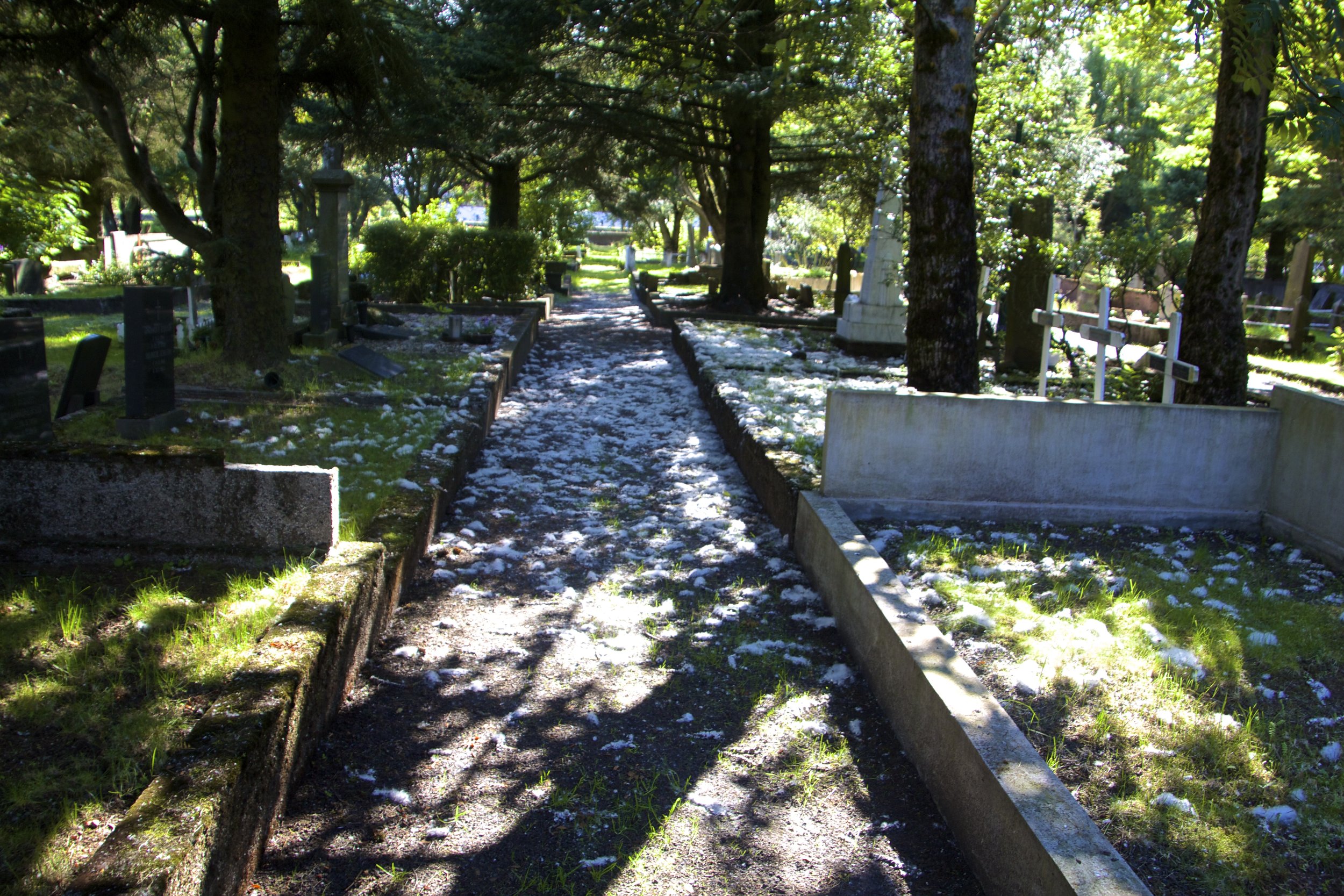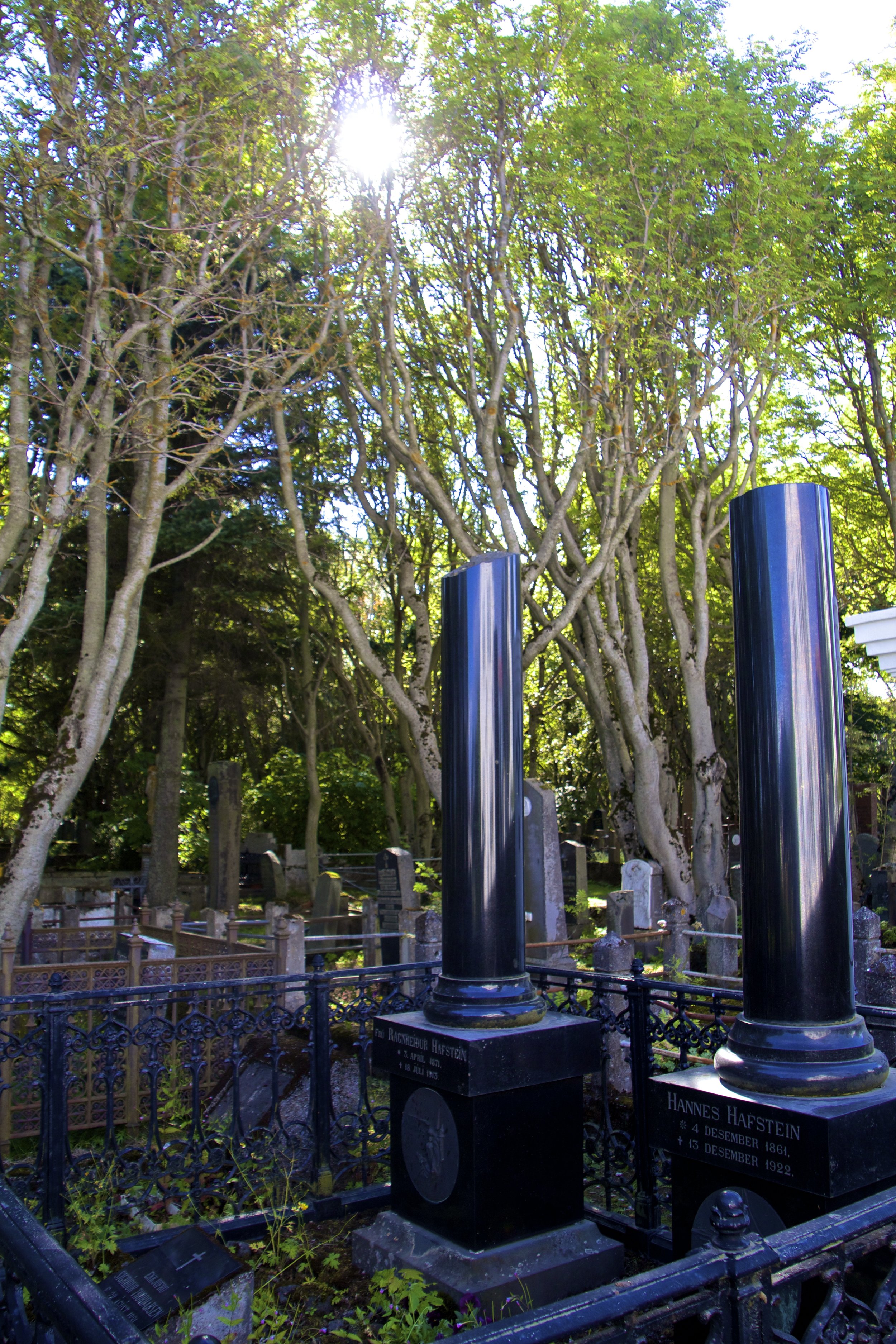
Peter's Guide To Reykjavík: Tourist Edition
Peter's Guide To Reykjavík: Tourist Edition
Reykjavík [Wreck – Yuh – Vick] isn’t just the capital city of Iceland; it’s pretty much the only city in Iceland! On top of that, it’s also home to upward of 1/3rd of Iceland’s population. That statistic alone might make it seem like Reykjavík is a huge city, but the population of Iceland as a whole is barely more than 300,000. So despite Reykjavik’s disproportionate population density, it’s still a tiny city by most standards. More people live in Akron, Ohio than in Reykjavík.
So Reykjavík is small, but it’s reputation is much bigger, and it’s growing quickly. Before World War II, Iceland was one of the poorest countries in Europe, and Reykjavík was cold, smoggy, and lonely. However, now that the world has entered into “The Long Peace,” Iceland’s economy has been on the rise, and Reykjavík has begun to come into its own. Today it’s a bustling, interesting, fast-paced Nordic city, and it ain’t cheap either.
Before I get into this, shout out to my lil’ bro for showing me around and giving me an excuse to come to this awesome country.
Here's a quick index of what we'll talk about in this guide. To zoom straight to the part you want to read, just click!
Guide Index
Click one & zoom down
1. First Impressions 🇮🇸

First Impressions
Reykjavík on foot.
First Impressions
Reykjavík on foot.
Reykjavík surprised me in a lot of ways. In my mind it was a cold, clean-cut, Arctic-European shot out of a travel magazine. When I actually arrived, while it was certainly beautiful, the Reykjavík that I discovered was much more edgy. Reykjavik is colorful! Art galleries, restaurants, record stores, and high-end shopping populated the street-level storefronts. Graffiti was sloppily scrawled on most available spaces between the shops and cafés. Bands played music on the streets and rainbow flags hung everywhere in anticipation of Iceland’s upcoming Pride celebration. It was nothing if not warm, welcoming, and vibrant. The only thing reminding me of how far north I had come were the arctic-esque sheets of metal that coated the building fronts.
It was also edgy because as soon as we strayed from the main “downtown” neighborhoods, the city took on a much colder, distinctly Soviet feel. Grey, cookie-cutter houses against the backdrop of Iceland’s cold, unforgiving landscape painted an even colder picture. It felt very bleak at times. Walking through these areas alone, I felt lonely, but the fact that a city of this size could exist in a place like Iceland is a testament to human ingenuity.
Reykjavík is pretty damn far north. It’s the northernmost capital city of a sovereign country in the world. It’s far enough north that, during the summer, it has almost 24 hours of continuous daylight. On summer solstice, there is broad daylight for the full 24 hours. When I arrived in late July, 11:30pm to 3:30am would be spent in a weird, lingering twilight. And by the time winter rolls around, Reykjavík residents will live in perpetual darkness.
Iceland as a whole can get quite cold, even in the summer, but the weather is much fairer in the southerly capital. Walking through the streets of Reykjavík, it seemed to be eternally a perfect fall day, but the cold mountains looming in the distance were an ever-present reminder of Iceland’s natural intrigue. We’d be headed towards them soon, but in the mean time, I enjoyed the sweater weather, and took photographs as I walked.
REYKJAVÍK DURING THE DAY…
Reykjavík At Night

Harpa
Reykjavík's famous concert hall.
Harpa
Reykjavík's famous concert hall.
Reykjavík has a lot of interesting history, but we’ll start with something a bit more modern. Harpa, Reykjavík’s concert hall and convention center, opened its doors in 2011. It was built by a Danish architectural firm, working with the noteworthy Icelandic artist Ólafur Elíasson. It really is an incredible building, and best of all, it’s free to enter. However, if you really want to spend money, there’s a fancy restaurant and regular events that are held. You can check the event calendar HERE.
Outside Harpa
Inside Harpa

Hallgrímskirkja
The church that defines Reykjavík.
Hallgrímskirkja
The church that defines Reykjavík.
Hallgrímskirkja is arguably the defining landmark of Reykjavík. It’s 244 feet (73 meters) high, making it not only the largest church in Iceland, but also (almost) the largest anything. Iceland is country that has no sky scrapers or sprawling metropolises, so the top of Hallgrímskirkja is pretty much the top of the world. Most structures in Reykjavík aren’t much taller than a few stories, so this church is clearly visible from the far side of Faxa Bay, miles away. (Faxa bay is the name of the bay where Reykjavík is located).
The church was commissioned in 1937, but wasn’t actually completed until 1986. Still, 1930s-esque ideas about what “modern” was going to look like are clear when exploring Hallgrímskirkja. The church has a haunting Ayn Rand/Sky Captain & The World of Tomorrow vibe to it that straddles the line between Nordic and Soviet in a strange way.
Take a look for yourself…
Outside The Church
Inside The Church
View From The Top
Hallgrímskirkja is open pretty much during business hours. Entry into the church is free, but riding to the top costs 900 ISK (7.59 USD). It is, indisputably, the best view you can get of Reykjavík, so I’d say that it’s definitely worth the money. It’s a short elevator ride up to the top, and then you’ll be able to look out on the city through tiny windows from behind the clock. The cold Icelandic wind funneling through the windows makes the top of Hallgrímskirkja an icebox, so wear a coat!

Landakotskirkja
Reykjavík's Roman Cathedral
Landakotskirkja
Reykjavík's Roman Cathedral
This was a church that I sort of stumbled upon. In trying to figure out what it was actually called, I discovered that this church has had many names. It has also been known as…
- Kristskirkja (Christ’s Church)
- Dómkirkja Krists Konungs (Christ the King Cathedral)
- Basilika Krists Konungs (The Basilica of Christ the King)
However, on the sign out front, it was simply referred to as the Roman Cathedral. Indeed, this church represents Roman Catholicism in Reykjavík. Roman Catholics only constitute 3.6% of Iceland’s total population, but their small numbers apparently weren’t enough to deter them from building this church!
Plans for the church came about in the immediate wake of WWI, and it had been formally sanctified by 1929. Architecturally, the church is considered to be Neo-Gothic. I know virtually nothing about architecture, but I had definitely picked up on the Gothic vibe of this place while I was there. Up on a hill overlooking central Reykjavík, everything in and around this church is almost completely silent, save for the cold Icelandic wind whistling by. It’s a peaceful spot.

Hólavallagarður Cemetery
Where the vikings are buried.
Hólavallagarður Cemetery
Where the vikings are buried.
Reykjavík is an intriguing place, but of its many historic sites, none intrigued me more than Hólavallagarður Cemetery. Far from the hustle and bustle of Laugavegur (Reykjavík’s main street), this cemetery sits in perpetual silence amongst some of this city’s most picture-esque neighborhoods. Inside this cemetery, the only sound is the rustling of the leaves in the wind. To step through the weathered gates of this cemetery is to step into another world, and I was enthralled.
Hólavallagarður Cemetery was consecrated in 1838, which was pretty much the dawn of time for Reykjavík. Most history of this city prior to the mid-1800s lays in snowy obscurity, save for a few bullet points. However, the 'unofficial' history of this cemetery goes back much farther, as evidenced by the weathered, ancient tomb stones. By the early 1900s, all available plots of land in this cemetery had been claimed by the departed, and what an interesting group of dead people they are! Residents of this graveyard included French sailors, Germanic sailors from the Faroe Islands, and others. However, few gravestones can compete with this vertical boulder covered in old Norse:
Credit for discovering this mysterious piece of history goes to my brother, who had discovered it in the backwoods of this graveyard in his early wanderings through Reykjavík. Old Norse, as is written on this headstone, is essentially a dead language. Modern day Icelandic is pretty close to Old Norse, but the alphabet seen above has not been used for almost a thousand years. Think about what that means for the age of this grave!
The whole graveyard is riddled with twisted winding branches and covered in moss. It literally could not be any cooler. Below are my best attempts to capture the strange mystique of Hólavallagarður Cemetery. Honestly, I don’t feel like I did a great job of it, but I think you’ll get the idea.
This might be an odd place to single out, but honestly, if you can only come to one place in Reykjavík, you should come here. Hólavallagarður Cemetery—Remember that name! It was one of the coolest places I've ever been for reasons I can't fully justify to you. It just had an aura about it.

Penis Museum
Yes, this is real.
Penis Museum
Yes, this is real.
And then there’s this.
Yes, Reykjavík has a penis museum. Actually it’s technically called the Icelandic Phallological Museum, but I assure you, it’s less than scientific once you’re inside. Entry costs 1250 ISK (10.51 USD). Kids get in free, but I’m judging any parent that takes advantage of that.
The museum is essentially a medium-sized room full of the severed penises of every species in the animal kingdom. The lights hanging from the ceiling are enclosed by hairy ram scrotums. The gift shop is full of smut. The walls are covered in penis-related art and poetry. Some of this poetry is literally cut from printer paper and taped onto the wall… so it’s clearly not an establishment with a high operating budget. However, in spite of the crassness of this institution, I have to admit that certain aspects were interesting.
The crowing jewel and centerpiece of this museum is a whale penis that is at least 6 feet high. Here’s a picture of my poor brother standing next to it for scale. Most of the penises in the museum were enclosed in giant cylindrical glass containers and preserved in some sort of liquid, like specimens in a lab. It might have been creepy if it wasn’t all so ludicrous. As a fellow man, I flinched with empathy at every penis I saw. Owch.
Anyway, that’ a whale penis over there, next to my little brother.
Feeling inadequate yet?
Well, if not, here’s a few more photos of animal penises from the Reykjavík Penis Museum, for better or for worse. Viewer discretion is advised…

Final Thoughts On Reykjavík
+ A Few Other Resources
Final Thoughts On Reykjavík
+ A Few Other Resources
So, from the perspective of your average tourist, that’s Reykjavík! It's a beautiful city, full of jaw-droppingly gorgeous people, but there’s more to Reykjavík than just this.
Now a common stop-over on transatlantic flights, there’s another dimension to the reputation this city is earning for itself, and you won’t catch a glimpse of it until at least 1:00am. I'm talking about Reykjavík's nightlife. That is subject of our second guide to Reykjavík, and things are gon' get a lil' crazy. Or, if you'd prefer to get out of the city and enjoy some of Iceland's natural beauty, I'd encourage you to visit the Iceland Index to browse photos, articles, and adventures according to location.
For our "track of the day," we'll be hearing from one of the most intriguing and talented musicians ever to come out of Iceland. This is the solo-project for the Sigur Rós frontman, Jón Þór "Jónsi" Birgisson. So good.





























